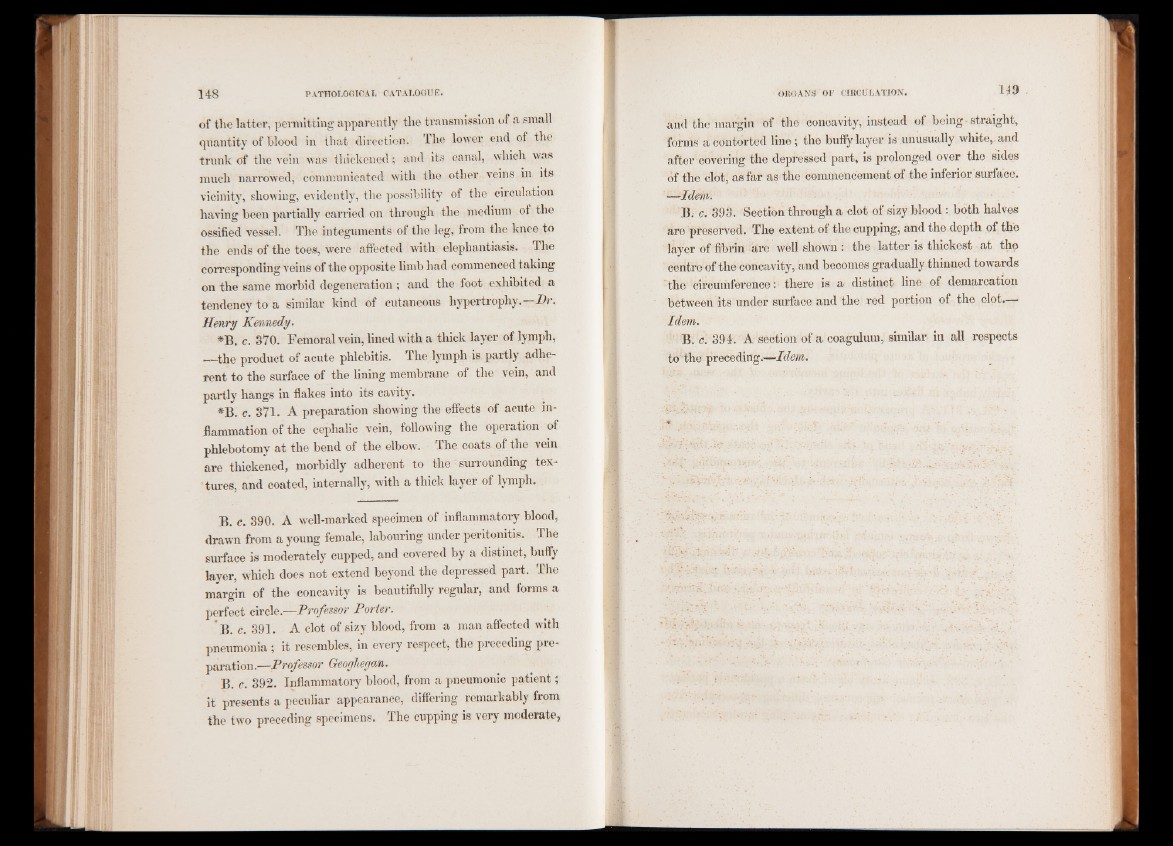
of the latter, permitting apparently the transmission of a small
quantity of blood in that direction. The lower end of the
trunk of the vein was thickened ; and its canal, which was
much narrowed, communicated with the other veins in its
vicinity, showing, evidently, the possibility of the circulation
having been partially carried on through the medium of the
ossified vessel. The integuments of the leg, from the knee to
the ends of the toes, were affected with elephantiasis. The
corresponding veins of the opposite limb had commenced taking
on the same morbid degeneration ; and the foot exhibited a
tendency to a similar kind of cutaneous hypertrophy. Dr.
Henry Kennedy.
*B. c. 370. Femoral vein, lined with a thick layer of lymph,
—the product of acute phlebitis. The lymph is partly adherent
to the surface of the lining membrane of the vein, and
partly hangs in flakes into its cavity.
*B. c. 371. A preparation showing the effects of acute inflammation
of the cephalic vein, following the operation of
phlebotomy at the bend of the elbow. The coats of the vein
are thickened, morbidly adherent to the surrounding textures,
and coated, internally, with a thick layer of lymph.
B. c. 390. A well-marked specimen of inflammatory blood,
drawn from a young female, labouring under peritonitis. The
surface is moderately cupped, and covered by a distinct, buffy
layer, which does not extend beyond the depressed part. The
margin of the concavity is beautifully regular, and forms a
perfect circle.—Professor Porter.
B. c. 391. A clot of sizy blood, from a man affected with
pneumonia ; it resembles, in every respect, the preceding preparation.—
Professor Geoghegan.
B. c. 392. Inflammatory blood, from a pneumonic patient ;
it presents a peculiar appearance, differing remarkably from
the two preceding specimens. The cupping is very moderate,
and the margin of the concavity, instead of being straight,
forms a contorted line; the buffy layer is unusually white,, and
after covering the depressed part, is prolonged over the sides
of the clot, as far as the commencement of the inferior surface.
—Idem.
B. c. 393. Section through a clot of sizy blood : both halves
are preserved. The extent of the cupping, and the depth of the
layer of fibrin are well shown: the latter is thickest at the
centre of the concavity, and becomes gradually thinned towards
the circumference: there is a distinct line of demarcation
between its under surface and the red portion of the clot.—
Idem.
B. c. 394. A section of a coagulum, similar in all respects
to the preceding.—Idem.